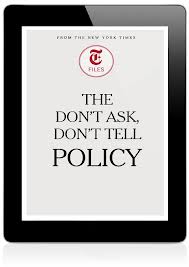Employment Issues
Flexible work contracts
When applying for a job be sure to know the type of work contract you are applying for. Often contracts can be negotiable, and the following information explains the different types of work contracts available in the UK.
Part-time work
- this involves working fewer hours than would be considered full time. There is no particular number of hours that make someone part time or full time, but a part-time worker will usually work less than 35 hours a week.
- Part-time work is often undertaken to free time for study, training or other responsibilities such as childcare, and the majority of part-time workers are women.
Flexi-time
- As the name suggests, Flexi-time offers employees some flexibility over the times that they work. Provided employees work core hours (often in the middle of the day or at the busiest times) they can make up their remaining hours as they choose.
- Some organisations allow employees to take excess hours as additional leave (sometimes called ‘flexi-leave’), although normally employees are not allowed to accrue too many hours and commonly there is a limit of one to one and a half days per month.
- Flexi-time is most common in office environments.
Compressed working hours
- Compressed working hours involves working different patterns of hours on different days.
- Commonly an employee will work longer hours over four days of the week and take a day off or half a day off one day of the week.
- Unlike flexi-time, the pattern of hours is fixed and agreed in advance with the employer.
Term-time working
- With term-time working an employee works regular hours during school terms but takes time off over school holidays.
- This kind of work is common in educational environments and is often popular with parents of school-age children.
TOIL (time off in lieu)
- Time off in lieu is where an employee takes time off to compensate for extra hours they have worked.
- It is often offered by employers instead of paid overtime.
- TOIL normally needs to be agreed with managers in advance.
Annualised hours
- An annualised hours contract specifies the number of hours to be worked in one year. This pattern originally developed in industries with a seasonal work flow, such as manufacturing, but has extended into retailing, financial services, and health and emergency services.
- Annualised hours contracts are normally (but not always) associated with shift work.
- In annualised hours a worker’s hours are calculated over a year. The majority of these hours are then allocated to specific shifts, but the remaining hours are kept in reserve so that workers can be called in at short notice as required.
Zero-hours contracts
- Zero-hours contracts are where a worker is not guaranteed any work at all. Instead an employee agrees to work as and when they are needed by their employer.
- Zero-hours contracts are common for supply teachers and bank staff in health and social care settings. This kind of work tends to appeal to people who are looking for an occasional income.
V-time working
- V-time working involves a voluntary reduction in hours for a fixed period with the guarantee of a return to normal hours once the period ends.
- V-time working may be initiated by the employee or the employer, and is normally agreed for specific purposes, e.g. undertaking a course of study or caring for a family member
Blog
Top eBooks Under $5 on Discrimination in the Workplace
Kindles, iPads and other electronic reading devices have made it more convenient for you to access materials, both for leisurely purposes and for informational purposes. With eBooks, you can obtain information to not only help you succeed, but to also help with possible problems that may occur in the workplace. This list is composed of eBooks from Amazon.com to help you learn how to handle discrimination of any kind in the workplace. What is even better, is that these eBooks are all under five dollars, yet provide detailed information that is easy to follow.
*Note: Ratings are all out of five stars.
by Cathy Harris
Price: $3.58
Rating: N/A
by Cathy Harris
Price: $3.58
Rating: N/A
The Don't Ask, Don't Tell Policy
by The New York Times
Price: $2.05
Rating: N/A
Workplace Diversity: Does Not Mean Equal Opportunity, Equal Growth, and Equal Advancement
by Richard Brown
Price: $3.59
Rating: N/A
by Cathy Harris
Price: $3.50
Rating: 1
by Bikash Kalita
Price: $3.58
Rating: N/A
by Richard Campbell
Price: $3.57
Rating: 5
Baby Boomers Facing The World Age- Discrimination- Employment
by James Williams
Price: $4.11
Rating: N/A
Related Articles:
- What are eBooks?
- Top eBooks Under $5 on Resumes
- Top eBooks Under $5 on How to Find a Job
- Top eBooks Under $5 on Interviews
- Top eBooks Under $5 on Cover Letters
- Top eBooks Under $5 on Working Abroad
- Top eBooks Under $5 on Communication
- Top eBooks Under $5 on College Preparation
- Top eBooks Under $5 on Networking
- Top eBooks Under $5 on Reference Letters
- Top eBooks Under $5 on How to get a Promotion
- Top eBooks Under $5 on Volunteering
- Discrimination
- Gender Discrimination
- Age Discrimination
- Racial Discrimination
- Disability Discrimination
Employment Issues
Employment Security Commission
What is Employment Security Commission?
It is a federal and state program for the unemployed to still receive money while they are out of work and searching for more employment. It is designed to help support families and households while the unemployed candidate is searching for another job. This program does have its limits and is not meant to pay the candidate the same amount that he or she made previously, or to enable the same standard of living before the candidate lost his or her job.
What does it offer?
The basic function of the program is that it pays the unemployed while they are searching for other employment options. However it also offers other services and benefits to help enhance the knowledge of the candidates. The program wants to help and encourage employment, not support the unemployed. Other benefits include: career information, resume help, training programs and job fairs.
How does it work?
The government began collecting a payroll tax on employers under the 1935 act. States were then also encouraged to set up programs following similar and broad guidelines. Currently, all states have some form of this program. Although each state has its own form of the program, they still follow the federal rules and guidelines. Most are standard with little differences such as the name of the program may vary from state to state as well as the specific benefits that are offered.
Who can apply to recieve the benefits?
Generally, anyone who lost their job can apply. However there are conditions that must be met before the unemployed candidate receives the insurance. The candidate must be out of work for reasons other than their own. For example, he or she must have been fired or if he or she quit, the reasoning must prove that there was legitimate cause such as safety issues. Also, in order to file for unemployment, the candidate needed to have worked for his or her previous employer long enough to prove that the employer paid a sufficient amount of money for the candidate into the system. The standard time period that the a state looks into the work history is about 15 months.
How long can you use it?
The general amount of time to receive unemployment benefits is about 26 weeks. However, there is the ability to apply for an extension that goes up to about 99 weeks. The amount of time depends on the qualification of the candidate.
For more information:
or
- Visit the program that your own state offers.
Oregon
Rhode Island
South Dakota
Employment Issues
Disability discrimination
Disability discrimination is when an employer that is covered by the Americans with Disabilities Act or Rehabilitation Act treats a qualified candidate who has a disability differently or unfavorably due to that disability. The disability could be current or the candidate may have a history of a disability such as cancer or another disease that prohibited working in the past, but the candidate is now in remission or able to continue working. Disability discrimination also applies to those who have mental impairments as well as physical.
The law covers disability discrimination in the workplace, harassment because of disabilities and reasonable accommodation for disabilities.
The United States Employment Opportunity Commission provides detailed information about each of those categories as well as links to further information about disability discrimination. Other sources include include information on your rights as a person with disabilities, where to go if you are being discriminated against as well as other accommodations and employment options.
-
Blog12 years ago
Sorority Recruitment
-
Resume and CV13 years ago
Letters of recommendation / references
-
Resume and CV13 years ago
Resume or Curriculum Vitae (CV) ?
-

 Resume and CV13 years ago
Resume and CV13 years agoWhich Resume Format Should I Choose?
-
Resume and CV13 years ago
Basic rules for writing your resume
-

 Cover Letter13 years ago
Cover Letter13 years agoThe cover / motivation letter
-
Cover Letter13 years ago
Europass CV
-
Sample Resumes, Examples and Templates13 years ago
Reference Example

